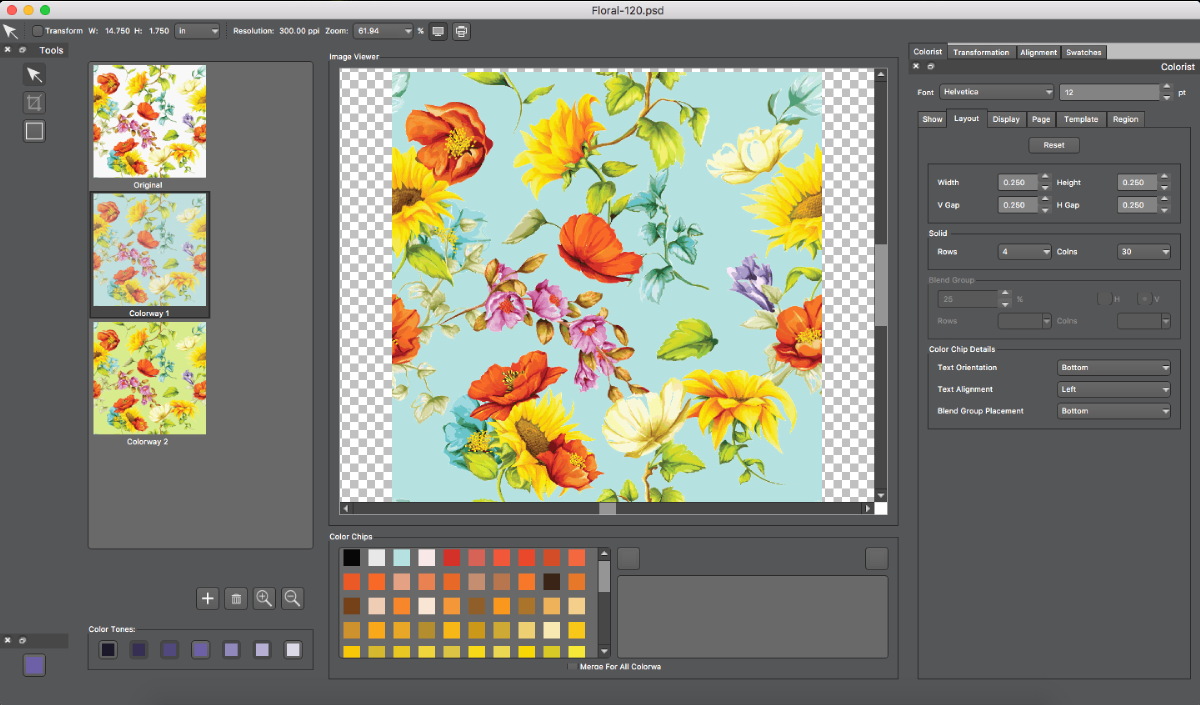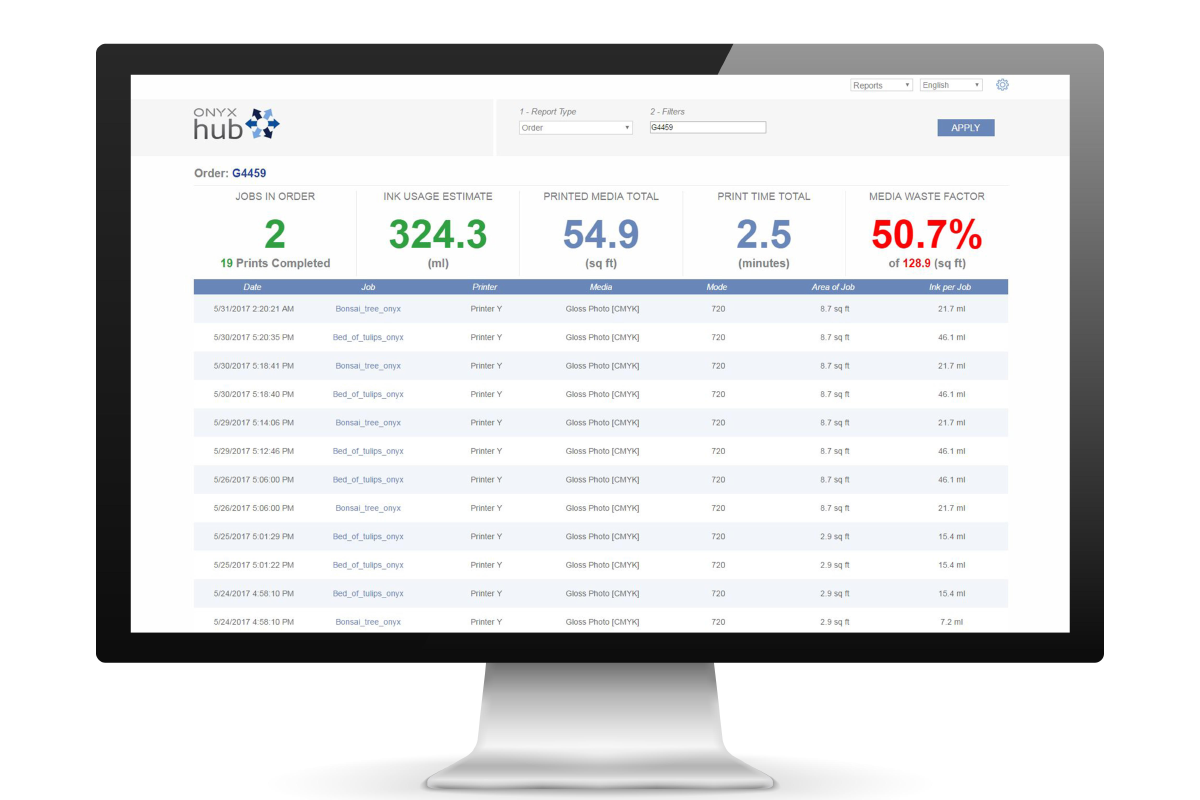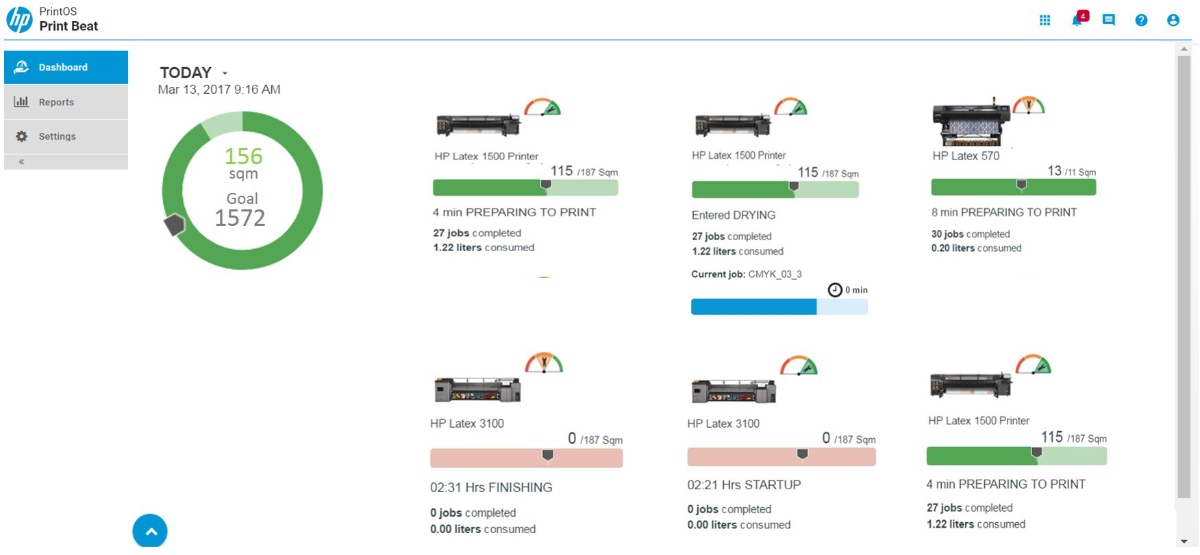Software development is where it’s at in large-format. So who’s doing what? Simon Creasy investigates.
Wide-format software providers have never had it so tough. A decade or so ago some products, like Rips, used to sell for as much as £2,000 - or more - a pop. Today, users can choose to lease - sometimes for just tens of pounds a month - or buy - for just a few hundred pounds - a software solution that they can download instantly from the internet with no training provided, or indeed needed.
As a result, over the last few years the primary focus of wide-format software companies has been to create products that are cheap to buy and easy to use, which ultimately leads to greater levels of commoditisation and makes it increasingly difficult for developers to make their offer stand out from the crowd. However, that hasn’t deterred some software providers from trying. Over the last few months a number of companies have introduced innovative new levels of functionality to existing products and launched brand new products to meet customer demands.
Take the example of EFI. In December last year, it released version 6.5 of its Fiery proServer, which was specifically designed with the burgeoning textile market in mind.
“The main focus was on the area of colour management because in the textile market you have quite a lot of different ink combinations and different ink versions,” says Stefan Spiegel, general manager of EFI’s Fiery wide-format print server/software operations. To this end, EFI introduced Fiery Textile Bundle, to be used with its Reggiani digital inkjet printers, which includes new Fiery DesignPro Adobe Illustrator and Photoshop plugins and the latest Fiery proServer digital front end. Although the first shipments of the product are still being bedded in, EFI is already beta testing version seven, which launches this month (April), just in time for Fespa.

“It’s a completely new development from our side because it’s the first time we are going in the direction of Fiery Command WorkStation [EFI’s print job management interface],” says Spiegel. “We have approximately 1.5m users of Command WorkStation and version 7 is going to be the first time we are talking about what we are calling ‘one Fiery’. That means you have a Fiery that can drive your toner device and at the same time drive your inkjet devices.” He says the introduction of this functionality, which he describes as a “big step” for the firm, was driven by customer feedback.
“When you go out to visit our customer base, if you see a customer who is doing inkjet I am pretty sure you will find a cutsheet in the office as well and vice versa. When you go into shops customers are running a lot of applications sometimes and that is getting more and more complicated. This is the first time we can drive all devices, including cutsheet, from one application.”
These changes have been largely driven by printers trying to eradicate inefficiencies, according to Spiegel. “Printers are coming more and more under pressure because the square metre price is going down, so the only way to keep their margin up and make money is to speed up their machines in terms of set up and getting data faster,” he says. “People are looking for easier applications that can control their complete [print] shop.”
John Davies, product group manager, workflow, at Fujifilm Europe, agrees. He says he has witnessed a growing trend of print customers who are looking to consolidate the number of Rips they use.
“In the past what companies tended to do is they would buy a new piece of equipment to fit a specific purpose and it would come with a Rip from that vendor - it could be ColorGate, Caldera or Onyx - and then very quickly they would have six pieces of equipment in house all with a different Rip and front end. What that means is not everybody who works on that production floor can use every piece of equipment to its most efficient level.”
So what’s increasingly happening nowadays, according to Davies, is customers are looking to standardise their front end so that machine operators can jump from different pieces of equipment and this in turn helps to drive efficiencies. He sees the current pressures and trends in the wide-format sector following the same “efficiency pattern” that general commercial print followed a decade or so ago.
“We go into a lot of wide-format companies and they tend to just have a Rip on the front of a device and everything that happens before it gets there is a very manual process, which is just like the commercial print world was 10-15 years ago,” he says. “But I think the pressures are coming into the wide-format space as well now, where there is a bit more competition so there is a need to have a bit more automation and a bit more efficiency. All of these things put together are driving companies to think ‘we have the equipment, but we are not using the print capacity that we’ve got efficiently’.”
He says one way wide-format printers are addressing this capacity issue is through tools like the wide-format automatic solution tilia Griffin, which was added to Fujifilm’s suite of XMF workflow products late last year.
“Tilia Labs [the developer of tilia Griffin] already had a product layout and planning tool for commercial print, but they saw a need for a similar product in the wide-format sector,” says Davies. “If you’re printing a lot of irregular shaped items on the same material, the question is ‘how do you maximise space and squeeze it together on one sheet?’ What we found some customers were doing was they were manually doing this using InDesign or Illustrator. It was literally someone’s job to take all of these jobs in - 50 of these items, 20 of these and 30 of these - and then drag and drop them and arrange them on the sheet, whereas Griffin will do that automatically and work out the most efficient way of printing it. That can turn a couple of hours of manual work into 10-15 minutes within the application.”
This automation of processes that might historically have been dealt with manually is a growing theme from customers who are trying to optimise the way they operate.
“Automation and efficiency is where people look to first when they are getting squeezed on price,” says Davies. “How do I get more out of what I’ve got without taking on more people or buying more equipment? It’s looking back and saying ‘this machine is only printing two hours a day and we have a seven hour day in our business’. Or some customers might say ‘we are quite busy all day, but we are not printing all the time, so how do I make my operation more efficient up front so that when the jobs come in they go quickly from being booked in by the customer service person to being ready to be printed on the shop floor’?”
“Automation is everywhere” at the moment, says Jonathan Rogers, international marketing manager at Onyx Graphics
“Customers are asking for tools that increase production automation and output capacity, reduce manual error and have the means necessary to prove superior prints to their customers in a simple manner,” he explains. “PSPs are looking for ways to cut costs and reduce errors in the print shop and are looking for automation to help. Wide-format printing is inherently complex and not always straightforward to automate. This is an area we see growing in demand.”
At Fespa 2018 Onyx will be showcasing the latest release of Onyx Hub, which features real-time and historic trend data, including ink usage and media waste, as well as actual costs for ink, media, printer and labor rates for job costing.

“These new features help business owners and production managers answer questions such as ‘did we estimate that job correctly?’ and ‘did we make any money on that job?’,” says Rogers. “Onyx Hub also helps eliminate inefficiencies in production workflows and drill down from site-wide data to job level to delve into business needs such as printer utilisation, production bottlenecks, training needs, and more.”
PSPs are at different stages of digital transformation, but there are some commonalities across all businesses and this has played a large part in influencing the latest iteration of products brought to market by software providers, according to Arnaud Fabre, product manager at Caldera.
He adds that “agile” print shops are eager to source products that offer “differentiation and high added value propositions” and that many of the features added to Caldera’s Rip software version 11.2, which was released in February, were in direct response to customer demands.
“They wanted more help to master the software, so we integrated direct help access links per module and views through HelpLinks; they wanted help with media savings for special applications where the media is textured and so orientation really matters, so we added ContourNesting 180°; they wanted a flexible and common interface to manage multi-layer printing to print special effects, so we introduced MultiLayer; and they wanted to have the ability to handle the optical brightness on all they media they manage - either opaque or transparent - so we added TotalColor qb,” says Fabre.
Likewise HP has launched a number of products responding to the needs of customers, says Phil Oakley, large-format business manager UK and Ireland at HP
“Last November, we partnered with award-winning designers, the Yarza Twins, Silas Amos, and Smirnoff to launch the beta programme of HP SmartStream Designer for Designers (D4D),” says Oakley. “The new SmartStream D4D software is a suite of design solutions that enable designers to create up to 20 variations on any design, and to take control of their own creative process.”
Over the course of the last 12 months HP has also expanded its HP Click Software for use on all DesignJet T-Series machines “in response to the demand we were seeing for an accessible, low-maintenance printing experience. With no need for a driver, the software offers easy, simple one-click printing, plus drag and drop multipage PDF printing and real-print preview, while optimising media usage and costs,” explains Oakley.

Going forward there are a number of areas where software providers think there is scope for further product innovation and growth. One is Cloud-based software.
“Everything to do with Cloud processing and Cloud colour management is a big, big topic,” says EFI’s Spiegel. “The people in the shops are really looking for help and that is coming from the Cloud. It’s a big trend that we see more and more of and we are trying to address this. I’m not sure if we will do something on this for Fespa [this year], but it’s clearly something for the future.”
It is something Rip provider Shiraz Software is already focusing a lot of its efforts and energies on, according to the company’s business development director Ramin Shahbazi. He says Shiraz has created some “exciting stuff” to capitalise on this growth area.
“One of the things we have is an end-to-end Web-toprint solution,” explains Shahbazi. “So we create the front end, the middle ware and we have the back end - the server - and it is all fully integrated. At the moment if a job is submitted via ecommerce then what tends to happen is the customer has to prepare the job then they send it to the Rip to be printed. We’ve effectively eliminated that process - it is all automated.”
A potentially even more exciting opportunity that Shiraz has identified is the introduction of “image streaming” technology.
“It’s similar to Spotify, where you stream music without giving the files away,” says Shahbazi. “Well we can stream images without giving the files away to the production site.” He says the company has developed a streaming technology that allows it to “securely and transparently” stream images for printing.
“Take the example of a website that offers artwork. The user can select the piece of art they want to print online, but the job doesn’t go to the printer with the image. The image gets streamed at the time the job is being produced from a very secure Cloud storage. We have a lot of technology that protects that image so it can’t be saved and it can’t be hacked.”
This is an area where he thinks a lot of innovation and software development could occur in the future as artwork and designs potentially become more valuable than the print itself - especially in markets like home furnishings, which he thinks will become much more digital print orientated.
“I haven’t been this excited about this part of the market for many years,” says Shahbazi. “It’s been the same old, same old, whereas now I can see an area where we can add a lot of value to someone who is looking for a solution like that.”
Products that add value is what customers are increasingly on the lookout for at the moment, so you can expect to see further innovation from software providers in these emerging niche areas, in addition to solutions that help to drive print shop efficiencies, in the months ahead.

